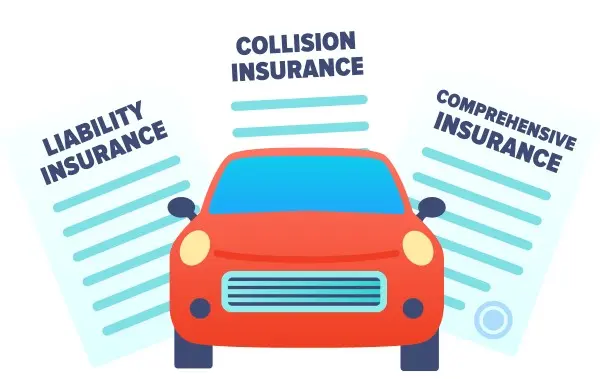
Types of Car Insurance Coverage
Car insurance policies typically offer several types of coverage to meet varying needs and legal requirements. Liability insurance covers costs associated with injuries or property damage to others in accidents where the insured driver is at fault. Collision insurance reimburses for damage to the insured vehicle resulting from collisions with other vehicles or objects. Comprehensive insurance covers non-collision-related damage, such as theft, vandalism, or natural disasters. Additional options include uninsured/underinsured motorist coverage, which protects against accidents with drivers lacking sufficient insurance.
Factors Affecting Insurance Premiums
Several factors influence car insurance premiums, including age and driving experience of the driver, vehicle type and usage, driving record, credit history, and location. Younger drivers or those with recent accidents or traffic violations typically face higher premiums. The type of vehicle, its safety features, and annual mileage driven also impact rates. Insurance companies assess risk factors to determine premium amounts, offering discounts for safe driving records, multiple policies, or vehicle safety features.
State-Specific Requirements
Each state sets minimum car insurance requirements that drivers must meet to legally operate vehicles on public roads. Requirements vary by state and may include minimum liability coverage limits for bodily injury and property damage. Drivers should familiarize themselves with state-specific insurance laws and ensure compliance to avoid penalties or legal consequences in case of accidents or traffic violations.
Choosing the Right Coverage Limits
When selecting car insurance coverage, drivers should consider their financial situation, vehicle value, and potential risks. Adequate liability coverage protects against lawsuits and medical expenses for others involved in accidents. Collision and comprehensive coverage ensure financial protection against damage or loss of the insured vehicle. Evaluating coverage limits and deductibles helps strike a balance between affordability and comprehensive protection based on individual needs and budget constraints.
Discounts and Savings Opportunities
Insurance companies offer various discounts and savings opportunities to reduce premiums for eligible policyholders. Common discounts include safe driver discounts for accident-free records, multi-policy discounts for bundling car insurance with other policies like homeowners insurance, good student discounts for young drivers with high academic achievements, and vehicle safety feature discounts for cars equipped with anti-theft devices or anti-lock brakes. Taking advantage of available discounts helps lower overall insurance costs.
Claim Process and Customer Support
Understanding the insurance claim process and evaluating the insurer's customer support services are crucial considerations when choosing a car insurance provider. Responsive customer support, easy accessibility to claims representatives, and efficient claims processing contribute to a satisfactory experience during stressful situations such as accidents or vehicle damage. Reading customer reviews and evaluating insurer reputation for claim satisfaction helps gauge reliability and service quality.
Coverage for Rental Cars and Additional Services
Some car insurance policies extend coverage to rental cars, providing protection against damage or theft when renting vehicles for personal use. Policyholders should review coverage limits, exclusions, and rental agreements to ensure adequate protection during rentals. Additional services such as roadside assistance, towing, or rental reimbursement may be available as optional add-ons to enhance convenience and comprehensive coverage options based on individual needs.
Policy Renewal and Review
Reviewing car insurance policies annually or at renewal periods allows drivers to reassess coverage needs, update information, and compare premium rates from different insurers. Life changes such as vehicle upgrades, relocation, or changes in driving habits may warrant adjustments to coverage limits or policy terms. Shopping around for competitive quotes and exploring potential discounts ensure policyholders receive optimal coverage and value for their insurance investment.
Understanding Deductibles and Coverage Limits
Car insurance policies typically include deductibles, the amount policyholders must pay out of pocket before insurance coverage applies to claims. Higher deductibles often result in lower premiums but require greater financial responsibility in case of accidents or damage. Assessing deductible options and understanding coverage limits for different types of claims help drivers make informed decisions aligned with their financial capabilities and risk tolerance.
Importance of Responsible Driving Habits
Maintaining responsible driving habits not only promotes safety on the road but also helps minimize risks and potential insurance claims. Safe driving practices, adherence to traffic laws, and avoiding distractions reduce the likelihood of accidents or traffic violations that could impact insurance premiums. Drivers should prioritize defensive driving techniques, regular vehicle maintenance, and awareness of changing road conditions to protect themselves and others while maintaining affordable car insurance rates.
Conclusion
Car insurance serves as a crucial financial safeguard for drivers, offering protection against unforeseen accidents, theft, or damage to vehicles and liability for injuries or property damage to others. Understanding coverage options, evaluating factors influencing premiums, and selecting the right policy based on individual needs ensure comprehensive protection and peace of mind on the road. By staying informed about insurance requirements, reviewing policy terms regularly, and maintaining responsible driving habits, drivers can navigate the complexities of car insurance effectively and make informed decisions to safeguard their vehicles and finances.






